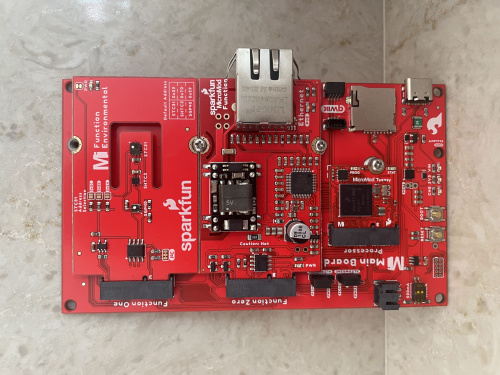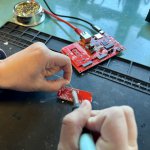
Original : https://www.sparkfun.com/news/4401#comments
The Hookup
The Hookup is about as simple as it gets! All you need is a screwdriver. However, I will say that when using two function boards like we’re doing, it’s important to make sure they are fully set in the M.2 connector, and also to tighten all of the screws equally (not move from one to the other).

The Code The code is also fairly simple, it’s just a mixture of creating a web server and sending the VOC levels from the SGP40 to that server.
/*
Industrial air quality remote sensor
A simple web server that shows the VOC levels using a Teensy Processor board,
the MicroMod Ethernet Function board and the MicroMod Environmental Function board.
Taken by Paul Clark's SGP40 code and the built in Arduino example for an Ethernet
web server, thanks to David A. Mellis, Tom Igoe and Arturo Guadalupi
*/Arduino sketch : https://www.sparkfun.com/news/4401#comments
Testing
Okay, time to test it out and see how the air quality changes when we solder! I found that it took a bit of time for the SGP40 to just calibrate to the room’s natural VOC level. And there’s probably some specific distance that the sensor should sit from the soldering station, but I thought since I sit so close to the fumes, the sensor should be equally close. Turns out, even with the lead free solder, the VOC levels still skyrocketed above the normal VOC numbers.
I suppose I’m not surprised; soldering is still introducing new compounds into the air that add to the VOC level. But it was still a good way to build an air quality sensor that can be monitored from anywhere in the building – not just at the soldering station on the serial monitor. And in this case, ethernet was one of the fastest ways to bring this project into the internet space. There are, of course, other ways to build a similar unit, depending on what you have…this could have also been done with a single Ethernet function board and a Qwiic environmental sensor. And of course, there are always ways to make an HTML web server page more spiffy, so that’s something to explore too.


COMMENTS